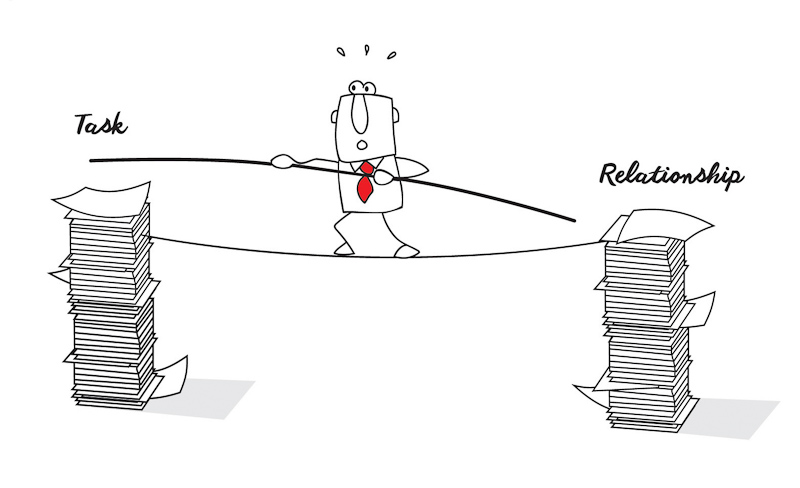Reframing Tension as an Opportunity to Engage

It is interesting to note that there is no positive word in the English language for “tension”. Some other similar words you can find in a dictionary are stress, strain, anxiety or problem. If any of these words were used in a sentence like, “There is ‘tension’ between the departments”, the typical response from people would be to think that something is wrong.
Yet, research is clear that there should be a healthy amount of tension for any engagement with your team, other agencies or the public. The challenge is, few leaders think this way. This is because we are trained to reduce everything to its smallest part, define it clearly as a problem and solve it. A problem solved means there is no tension. This may work in a mechanical world, but not in the world of human relationships.
Leaders take on responsibility for the whole system that cannot be broken down, and tension needs to be seen and framed as an opportunity to engage the different parts to keep them on track.
You can understand tension better with these tips:
- Recognise that managing tension is the life of any relationship. Too little tension and there is apathy. Too much tension and there is stress. The key is to learn how to balance and manage tension as each person has a varying capacity for tension in different situations.
- Look at tension as a reality check. It is an often-underused feedback loop that keeps you grounded in what is really going on. When there is tension, it means it is time to have a dialogue, to clarify the issues that are creating tension. Talk about where there may be confusion, misunderstanding, a different emphasis or just a gap between where you are and where you expected to be.
- View the world of human relationships not as a problem to be solved but as healthy and sometimes different aspects of what is valued, which are in tension with each other. These aspects are to be explored, understood and then ordered through communi- cation towards common goals. The tension that is there is often the result of dilemmas at work. Some common dilemmas in any team or organisation are: relationship versus task, individu- al versus group, future versus present, or internal versus external.
- Remind yourself of your overall goal or objective. What are we trying to do?
- Enquire into the issue and get clarity on the other party’s perspective. Learn it well enough to be able to repeat it back to them with their agreement. State your perspective and link it to the objective, and ask for where they see a gap.
- Keep communicating until it is clear. Find where you can agree or if a decision needs to be made, state it and give the rationale behind it so they can see your perspective clearly.
Let’s look at the dilemmas between relationship and task using the illustration of a man on a tightrope. You have two platforms set up with a rope between them. On one platform is the “task” that needs to get done. On the other platform is the “relationship”. These two platforms are connected and there is a clear and healthy tension between them. You can’t separate them. For example, if there is too much pull on the “task” platform, there will be no trust and you end up with people who won’t communicate, avoid conflict and quickly lose motivation. Yet, the work will never get done if there is an overemphasis on “relationship” and excellence is compromised. So you need both task and relationship, and the tension between them, to produce a healthy department or team.
There is no perfect way to balance the two. It must be worked out with each person and job. That is the hardest part for us to understand. There are times you need to focus on the task and other times to focus on the relationship.
The role of a leader is to create, manage or help ease tension to keep the system healthy and moving forward. The primary means of doing this is through dialogue. If tension creates challenges for the relationship, then it is a signal that we need to talk about it to get clarity and understanding of what we should do.
Dr Matt Rawlins is a process consultant, facilitator, communications coach, and educator, with 25 years’ experience in cross-cultural training. He is Chief Executive of Green Bench Consulting and teaches the Manager L.E.A.D programme at the Civil Service College.
- POSTED ON
Sep 9, 2014
- TEXT BY
Dr Matt Rawlins
-
Work Better
Dealing with Inter-Generational Conflict








